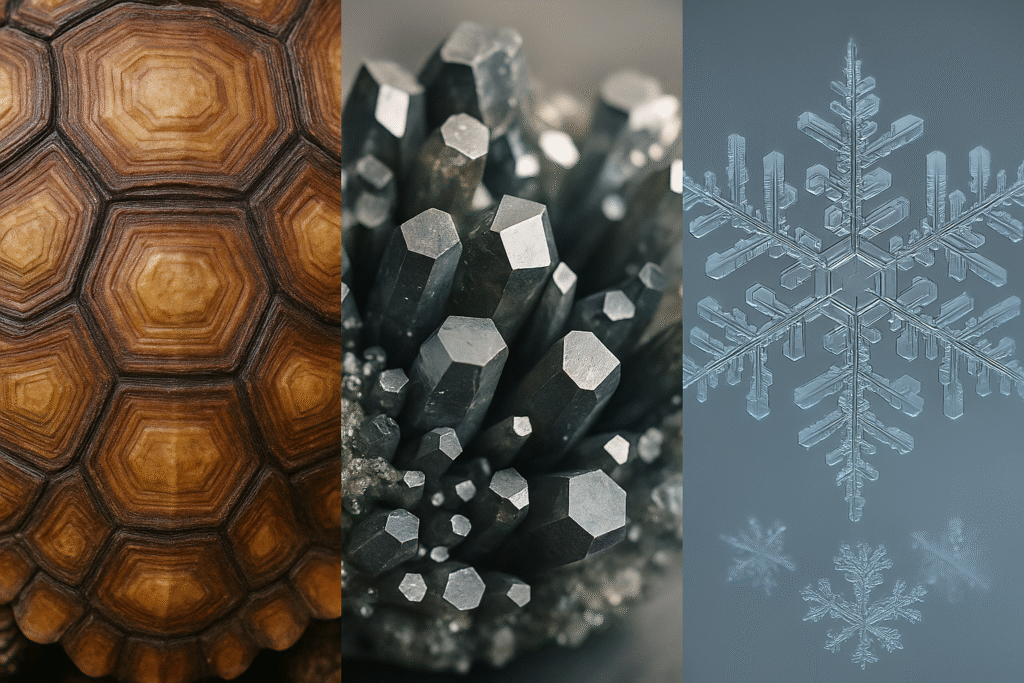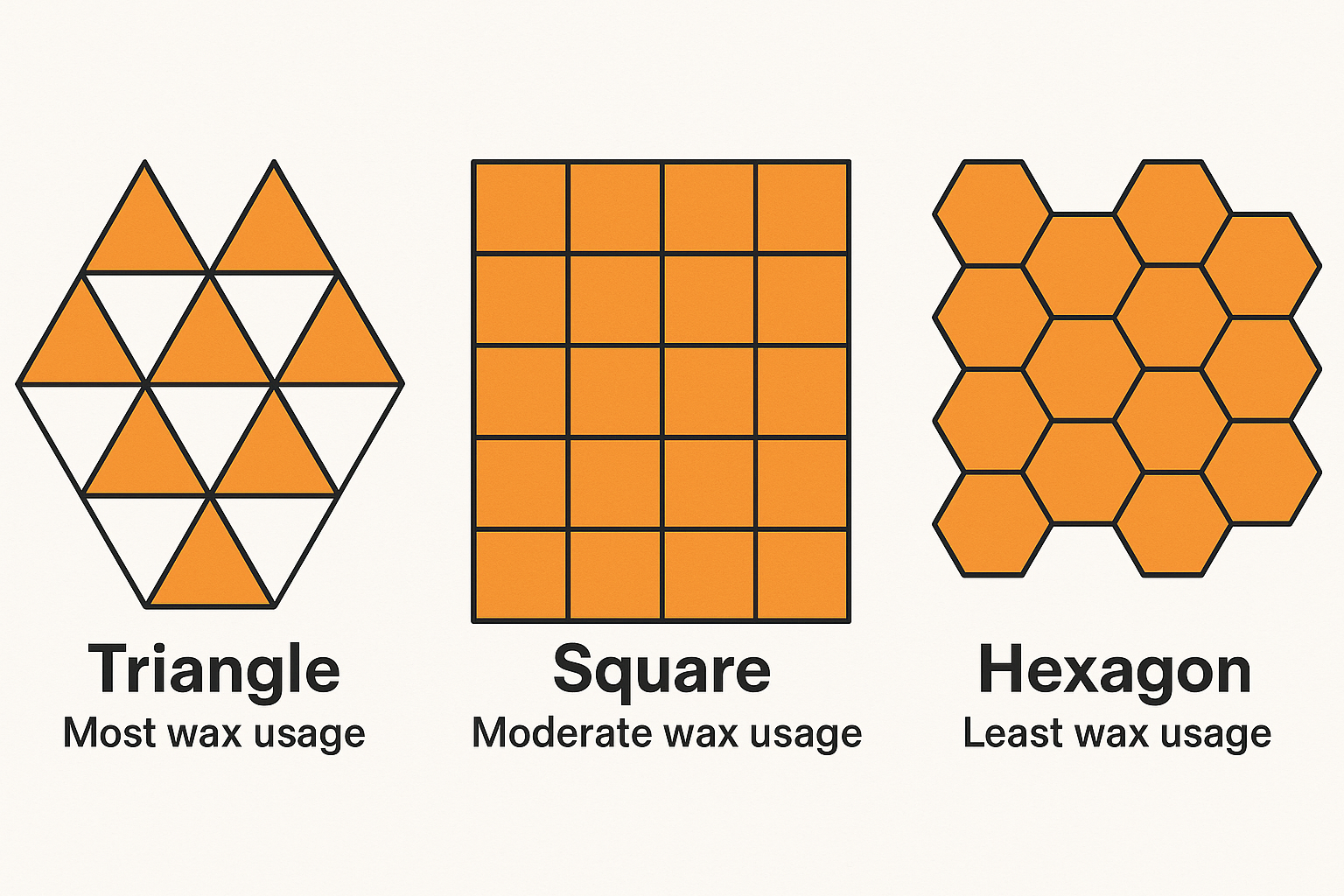Fun Fact: A honeybee can flap its wings 230 times per second—but its most astonishing feat might be its math skills.
We don’t usually think of bees as mathematicians. After all, they don’t carry calculators or solve equations on tiny blackboards. Yet the intricate hexagonal pattern inside every beehive is a masterpiece of geometry, efficiency, and natural logic—so precise, it has baffled thinkers from ancient Greece to modern-day engineers. So, what makes bees such gifted architects? Why do they build honeycombs in perfect hexagons and not circles or squares?
Let’s dive into the world of buzzing brilliance and uncover why bees might just be the most underrated math whizzes of the natural world.
Bees Don’t Guess—They Calculate
The honeycomb is one of the most efficient structures in nature. Each cell is shaped like a hexagon—six equal sides meeting at perfect 120-degree angles. Why not circles, which are simpler? Or squares, which are easier to build?
The answer lies in optimization. Bees need to store the maximum amount of honey using the least amount of wax. It turns out, hexagons do the job better than any other shape.
The Honeycomb Conjecture
The brilliance of the hexagonal structure was so striking that even the Greek mathematician Pappus of Alexandria pondered it around 300 AD. He suggested that bees, by instinct, had discovered the most efficient shape to fill a surface without leaving gaps.
Fast-forward to the year 1999, and Thomas Hales, an American mathematician, finally proved what’s known as the Honeycomb Conjecture: of all possible ways to divide a surface into equal areas with the least total perimeter, the hexagonal tiling is the most efficient. In other words, bees beat us to it—by about 100 million years.
Why Hexagons? A Lesson in Geometry
To understand the math, picture trying to cover a table with identical tiles, no gaps, no overlaps. Only three regular polygons can tile a surface without gaps: triangles, squares, and hexagons.
Triangles require more walls per area, meaning more wax.
Squares are okay, but not as space-efficient.
Hexagons strike the perfect balance: they fit together seamlessly and require less material to enclose the same area compared to other shapes.
This shape minimizes wax usage—critical because bees have to consume about 8 grams of honey to make just 1 gram of wax. That’s like burning calories to build your pantry.

Nature’s Engineers: Bees and Their Construction Skills
Building a honeycomb is no easy feat. Worker bees secrete wax from special glands, chew it into shape, and carefully place it to build each cell. The temperature inside the hive is regulated to keep the wax malleable.
The bees work with such synchronization that the two sides of the comb—built by different teams—meet perfectly in the middle, with no planning board, no supervisor, no blueprint. It’s an astonishing example of self-organization—a natural principle where complex structures emerge from simple rules.
Scientists believe this may stem from the stigmergy principle—where the structure guides further actions. Bees sense the partially built comb and instinctively continue in the correct direction. No need for central planning—just local rules and incredible consistency.
More Than Just Math: The Physics of Wax
Here’s where it gets wild. Initially, when bees start forming cells, the structures are more circular. But thanks to surface tension and heat, the wax softens and flows into the lowest-energy configuration—resulting in perfect hexagons.
It’s like how soap bubbles settle into hexagonal patterns when packed tightly together.
Researchers at the University of Cardiff even filmed bees building combs, showing how physical processes—not just instinct—help refine the shapes. The bees may be using physics and math without ever “knowing” it.
Inspirations From the Hive
Humans have taken notice.
Airplane designers mimic honeycomb structures in aircraft wings for maximum strength with minimal weight.
Engineers in construction often incorporate honeycomb panels into walls, doors, and flooring to enhance strength while keeping materials lightweight.
Tech companies like Hexcel Corporation (a global leader in advanced composites) rely on honeycomb-inspired designs for satellites and wind turbines.
Even packaging companies use honeycomb cardboard to reduce weight while keeping durability high. This is biomimicry at its best—taking cues from nature to solve human problems

Bees and the Bigger Picture
Bees are more than honey producers or pollination assistants—they’re architects, physicists, and yes, unintentional mathematicians. Their honeycomb isn’t just a shelter—it’s a geometry lesson.
When we look at a beehive, we’re not just seeing insects buzzing around. We’re witnessing an age-old solution to an age-old problem: how to store more using less. In today’s world, where efficiency and sustainability are the buzzwords (pun intended), maybe we should look to the bees—not just for honey, but for wisdom.
Conclusion: What We Can Learn From Bees
So the next time you stir honey into your tea, pause for a second. You’re tasting the result of millions of tiny calculations and architectural genius passed down through generations.
Bees don’t carry rulers or protractors—but their work reflects mathematical elegance and biological purpose. In a world increasingly dominated by artificial intelligence (AI) and algorithms, it’s comforting—and humbling—to know that some of the best math is still done on wings and wax.
If nature can be this precise without formulas, maybe it’s time we learn to recognize intelligence not just in numbers, but in instincts. Bees may never attend math class—but they build their world like seasoned engineers. That’s geometry in flight.
Author’s Note
As someone who once struggled with geometry proofs in school, I find it both comforting and inspiring that bees, with their tiny brains and zero textbooks, have cracked one of math’s most elegant problems. The next time you spot a honeycomb, look closely. It’s not just insect architecture—it’s nature’s theorem, written in wax.
G.C., Ecosociosphere contributor.




